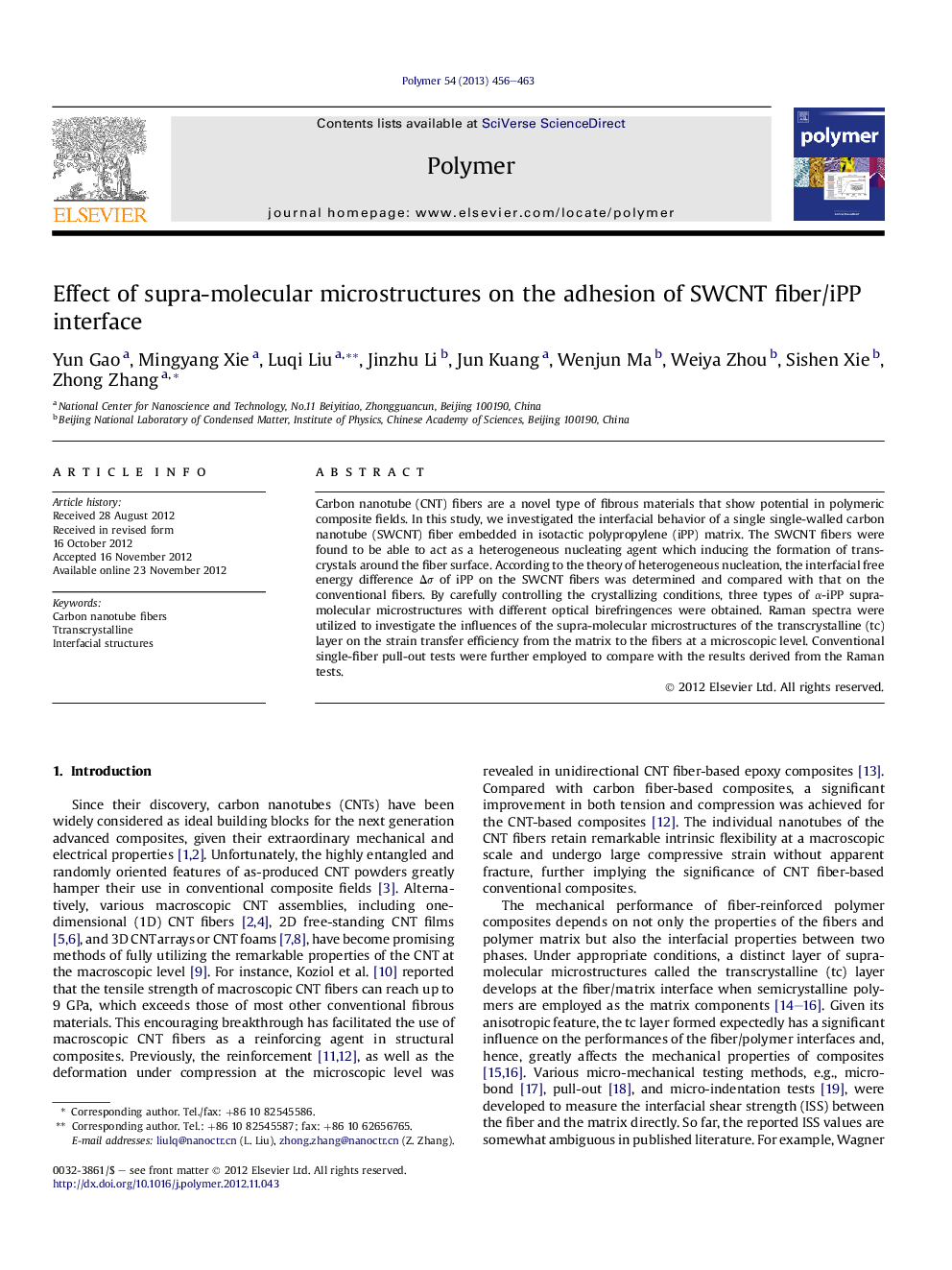| Article ID | Journal | Published Year | Pages | File Type |
|---|---|---|---|---|
| 5182754 | Polymer | 2013 | 8 Pages |
Carbon nanotube (CNT) fibers are a novel type of fibrous materials that show potential in polymeric composite fields. In this study, we investigated the interfacial behavior of a single single-walled carbon nanotube (SWCNT) fiber embedded in isotactic polypropylene (iPP) matrix. The SWCNT fibers were found to be able to act as a heterogeneous nucleating agent which inducing the formation of transcrystals around the fiber surface. According to the theory of heterogeneous nucleation, the interfacial free energy difference ÎÏ of iPP on the SWCNT fibers was determined and compared with that on the conventional fibers. By carefully controlling the crystallizing conditions, three types of α-iPP supra-molecular microstructures with different optical birefringences were obtained. Raman spectra were utilized to investigate the influences of the supra-molecular microstructures of the transcrystalline (tc) layer on the strain transfer efficiency from the matrix to the fibers at a microscopic level. Conventional single-fiber pull-out tests were further employed to compare with the results derived from the Raman tests.
Graphical abstractDownload full-size image
